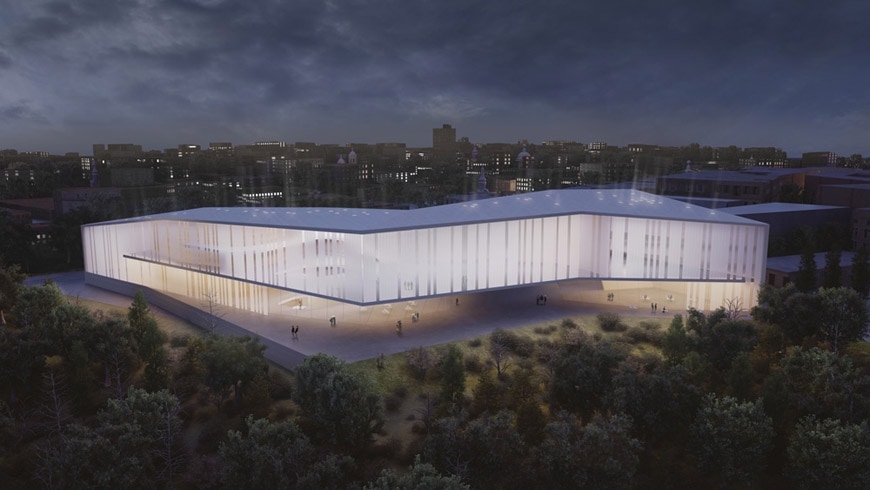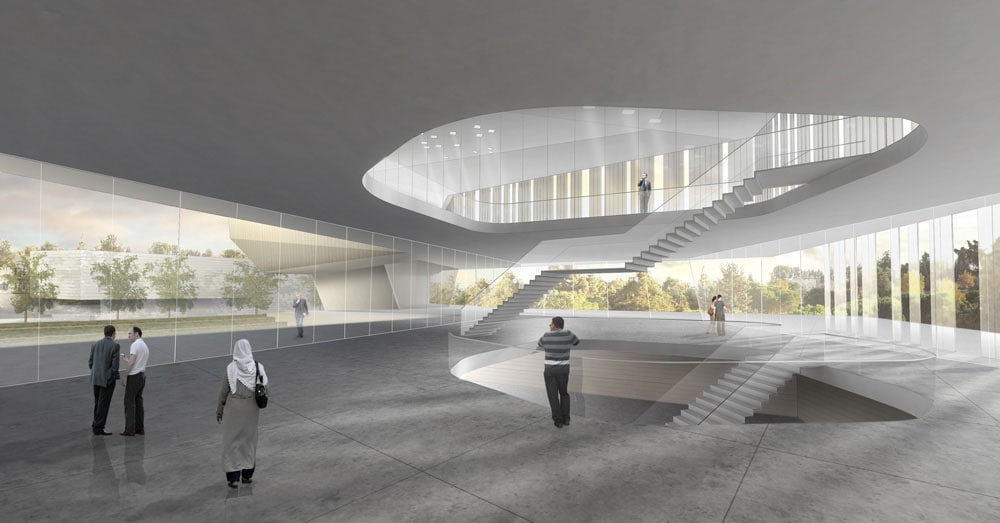Museum of Tolerance Jerusalem (MOTJ) – history of a controversial project
Client: The Simon Wiesenthal Center https://www.wiesenthal.com/
www.michaelchyutin.com
Team:
Bracha Chyutin, Michael Chyutin, Jacques Dahan, Ariel Noyman
The Museum of Tolerance Jerusalem (also known as MOTJ), whose architectural design has been developed by Israeli practice Chyutin Architects, is an interesting example of a contemporary building located on a site characterized by different architectural styles. Yet, it is also a controversial project both from a cultural and a political point of view.
A controversial project
Like the similar Museum of Tolerance in Los Angeles, the MOTJ is being developed by the Simon Wiesenthal Center with the objective of “promoting unity and respect among Jews and people of all faiths“.
Despite its commendable mission, it must be said that the project has raised local and international criticism.
The first problem is the presence of a highly regarded Muslim historic cemetery (known as Mamilla Cemetery) within the building site; therefore the construction of a relatively large building in a sacred burial site – with all which it implies, including excavations and removal of tombs, has been considered offensive and an “act of colonialism” by many Palestinians and by the Muslim religious authorities, who consider the museum just a part of a larger strategy aimed to physically and culturally remove Palestine from Jerusalem.
Furthermore, the relationship between the client and the architects has always proved difficult, at least. Commissioned to design the museum in 2004, Canadian-American architect Frank Gehry subsequently withdrew from the project, reportedly deeming it too “politically sensitive”; more recently, Chyutin architects, in charge of the design after winning an international architectural competition in 2010, also pulled out of the project.
It is also unclear who will directly manage the institution and what the content of the museum’s permanent exhibition, allegedly dedicated to the dialog between different people and religions, will actually be.
Yet, notwithstanding such a controversial background, the museum is currently under construction in the Mamilla (Ma’man Allah in Arabic) neighborhood and is scheduled to open in 2022.
The museum
Note: though Chyutin Architects are no longer in charge of the project, the building currently under construction retains all the fundamental elements of their original design, which are described below.
On a floor area of 180,000 square feet, the museum – which should present themes such as global antisemitism, extremism, hate, human dignity, and responsibility – will house two permanent exhibition spaces, one for adults and one for children, a conference center, a theater, an educational facility, a restaurant, and a book and gift shop.
The exhibition design of the Adult and Children’s Museum has been developed by Los Angeles-based firm Yazdani Studio.
The museum’s site is located on the boundary between the center of Jerusalem and the city’s Independence Park; to deal with these two fronts as well as to symbolize the connection between their different nature, Chuytin architects conceived a bridge-shaped construction.
The building’s north and south facades are different in their aspect; the side facing the city is stone-clad and solid while the one toward the park is an open and transparent glazed facade.
Overall, Chyutin’s design is characterized by a geometry based on a sequence of folded planar surfaces, to harmonize contemporary architecture with the pre-existing natural and urban landscape.
The MOTJ building is architecturally and functionally composed of two main parts.
A two-story underground wing will accommodate the permanent exhibition galleries and various storage spaces, this part opens on a sunken archaeological garden, where ancient Roman remains and an open-air terraced theater for 1,200 people are situated.
The upper part of the museum is a three-story volume – partially floating above the ground to create a gap that connects visually the city center on one side of the building with the park located on the opposite side – which contains the auditorium, special exhibition galleries, and multi-purpose spaces. The two parts are then connected by a four-level-high entrance lobby which also houses the museum’s restaurant and a shop.
All images above are courtesy of Chyutin Architects
copyright Inexhibit 2024 - ISSN: 2283-5474















